Best Flowering Plants for Shade 2024
- February 8, 2024
- 0 comment
Find the best shade-loving flowers to brighten up dark garden spots. Ideal for any gardener looking to enhance shaded areas. Explore the best flowering plants for shade that can brighten up the dim areas of your garden. Dealing with shaded spaces can be challenging, but it also offers a chance to explore unique plants suited for less sunlight. This guide helps you select plants that flourish in shade, turning less sunny spots into areas full of color and vibrancy. With the right choices, even the shadiest parts of your garden can become lively and beautiful.
List of Best Flowering Plants for Shade
- Astilbe (Astilbe)
- Bleeding Heart (Dicentra spectabilis)
- Foxglove (Digitalis purpurea)
- Hellebore (Helleborus)
- Hydrangea (Hydrangea)
- Japanese Anemone (Anemone hupehensis)
- Toad Lily (Tricyrtis hirta)
- Solomon’s Seal (Polygonatum odoratum)
- Lungwort (Pulmonaria)
- Primrose (Primula)
Understanding Shade in Gardening
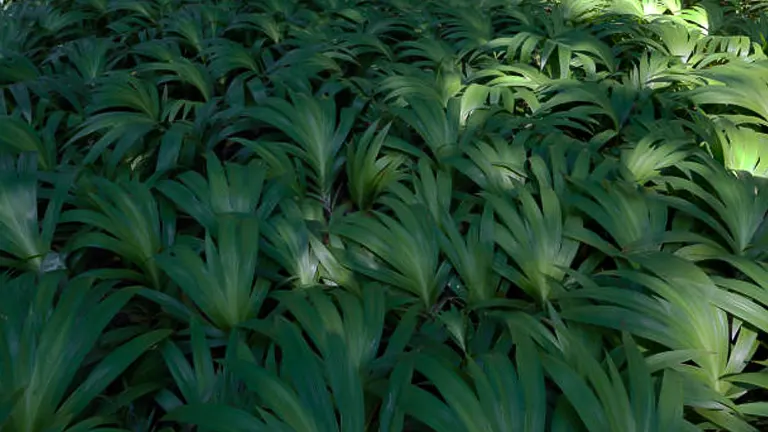
Shade in the garden isn’t a one-size-fits-all condition. It ranges from light shade, where plants receive indirect sunlight for most of the day, to deep shade, where sunlight is scarce. Recognizing the type of shade you have is crucial because not all shade-loving plants have the same light requirements. Here’s a quick breakdown:
- Light Shade: Also known as dappled shade, this area gets sun filtered through the branches of tall trees.
- Partial Shade: These areas enjoy three to six hours of morning sun but are shaded for the rest of the day.
- Full Shade: Full shade spots receive no direct sunlight but have some reflected light.
- Deep Shade: The most challenging of all, deep shade areas get no direct sunlight and are perfect for only a few plants.
Misconceptions about shade gardening include the belief that shade gardens are colorless or that plants grown in shade don’t flower well. This guide aims to dispel these myths by introducing you to a selection of plants that will flourish in your shady garden spaces.
Factors to Consider When Choosing Flowering Plants for Shade
Selecting the right plants for your shade garden requires understanding not just the type of shade but also other factors such as soil moisture and plant hardiness. Shade often comes with more moisture, which some plants will love, while others may need well-draining soil to prevent root rot. Additionally, ensuring that your chosen plants can withstand the local climate and weather conditions is key to a thriving garden.
- Type of Shade: Gardens can have different types of shade, such as light, partial, full, or deep shade. Light shade is generally found under trees with sparse canopies, while deep shade occurs under dense foliage or north-facing walls. Understanding the type of shade you have is crucial because some plants thrive in light shade but may struggle in deeper shade.
- Soil Moisture: Shaded areas can vary significantly in soil moisture. Some might be dry, especially under large trees that absorb a lot of water, while others could be consistently moist. Select plants that match the moisture conditions of your garden. For example, Astilbe and Japanese Anemone prefer moist soils, whereas plants like Solomon’s Seal can tolerate drier conditions.
- Soil Quality: The fertility and structure of the soil in shaded areas can affect plant growth. Shade often results in soil that is less rich in nutrients due to the lack of direct sunlight and possibly competition from tree roots. Improve soil quality by incorporating organic matter such as compost or leaf mould, which will benefit most shade-tolerant plants.
- Plant Hardiness: Plant hardiness refers to a plant’s ability to survive adverse growing climates, such as cold or heat. When choosing plants for your shade garden, consider the hardiness zone of your area to ensure that the plants can withstand your local weather conditions. This is especially important for perennial plants that you want to thrive year after year.
- Growth Habit and Size: Consider the mature size and growth habit of the plant to ensure it fits well in your garden space without overcrowding. Some plants, like Foxglove, grow tall and can be used as a background plant, while others, such as Lungwort, stay low to the ground, making them ideal for border fronts or ground cover.
- Bloom Time and Duration: To achieve continuous color in your shade garden, select plants with varying bloom times and durations. Some shade plants bloom early in the spring, while others provide color in the summer or fall. Incorporating a mix of plants like Hellebores (early bloomers) and Toad Lily (late bloomers) can extend the flowering season in your garden.
- Maintenance Requirements: Maintenance needs can vary widely among shade-tolerant plants. Some may require regular deadheading, division, or specific pruning to thrive, while others are relatively low maintenance. Consider your willingness and ability to perform these tasks when selecting plants to ensure your garden remains healthy and attractive.
- Pest and Disease Resistance: Certain plants are more susceptible to pests and diseases, especially in shaded, moist environments where air circulation may be limited. Look for varieties known for their resistance to common problems in your area to reduce the need for chemical interventions and to ensure a healthier garden ecosystem.
Top Flowering Plants for Shade
Let’s delve into some of the best flowering plants for shade, highlighting their requirements and care to help you make informed choices for your garden.
Astilbe (Astilbe)
Astilbe is a perennial favorite for shaded gardens, known for its feathery, plume-like flowers available in shades of pink, red, white, and lavender. Its fern-like foliage adds texture and interest even when not in bloom.
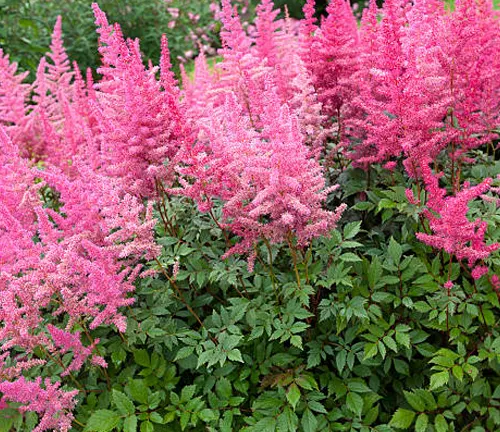
- Additional Insight: Astilbe’s ability to thrive in shade and its deer-resistant nature make it a popular choice for woodland gardens. Its plumes also make excellent cut flowers, adding to its appeal. Newer cultivars offer a range of sizes and bloom times, allowing gardeners to extend the flowering season in shaded garden areas.
- Light and Soil Requirements: Prefers partial to full shade and moist, well-drained soil.
- Bloom Time and Color: Blooms in early to mid-summer, depending on the variety.
- Care Tips: Keep the soil consistently moist. Mulching helps retain soil moisture and keeps roots cool.

Bleeding Heart (Dicentra spectabilis)
Bleeding Heart is a captivating perennial with distinctive heart-shaped flowers in shades of pink and white. It’s celebrated not only for its unique blooms but also for its attractive, fern-like foliage.
- Additional Insight: This plant is not only beautiful but also holds a rich history in traditional gardens, symbolizing enduring love. It’s a favorite in cottage gardens for its old-fashioned charm. For continuous bloom, consider planting the fringed-leaf varieties, which can flower from spring into late fall in cooler climates.
- Light and Soil Requirements: Thrives in partial to full shade and prefers moist, well-drained soil.
- Bloom Time and Color: Flowers in spring, offering a spectacular display of drooping heart-shaped blooms.
- Care Tips: Water regularly to maintain moist soil, especially during dry spells. It may go dormant in late summer, so pair it with late-season plants to maintain garden interest.
Foxglove (Digitalis purpurea)
Foxglove stands tall with spikes of tubular flowers in colors ranging from purple and pink to white. Its striking appearance adds height and drama to the shade garden.
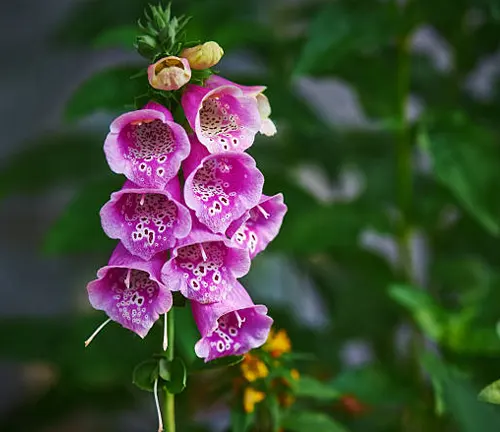
- Additional Insight: While stunning, foxglove is toxic if ingested, making it important to plant in areas away from pets and children. It attracts pollinators such as bees, adding to garden biodiversity. Digitalis ‘Dalmatian Purple’ is a variety that can flower in its first year, reducing the wait time for those spectacular blooms.
- Light and Soil Requirements: Prefers partial shade and well-drained, humus-rich soil.
- Bloom Time and Color: Blooms in early summer. Deadheading spent flowers can encourage a second bloom in the fall.
- Care Tips: Keep soil consistently moist. Foxglove is biennial, typically flowering in its second year, but many varieties are treated as annuals.
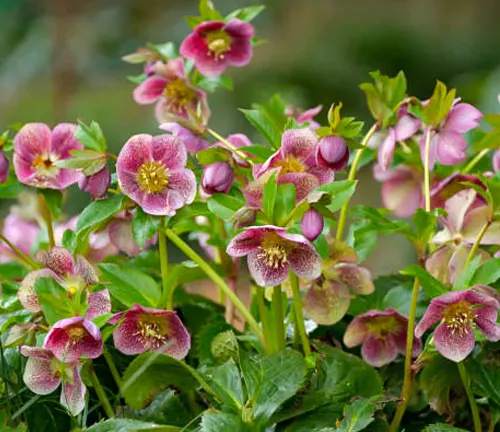
Hellebore (Helleborus)
Hellebores are one of the earliest bloomers in the garden, offering a range of colors from white and green to pink and purple. Their leathery leaves provide year-round interest.
- Additional Insight: Known as Christmas or Lenten roses, Hellebores can bloom even through snow, offering a rare winter bloom in milder climates. They’re also highly resistant to deer and other pests. Breeders have developed double-flowered and speckled varieties, expanding the visual options for gardeners.
- Light and Soil Requirements: Grows best in partial to full shade. Prefers well-drained soil rich in organic matter.
- Bloom Time and Color: Flowers in late winter to early spring, bringing color to the garden when most other plants are dormant.
- Care Tips: Water regularly during dry periods. Remove old leaves in late winter to make way for new growth and blooms.
Hydrangea (Hydrangea)
Hydrangeas are beloved for their large, showy flower heads that come in a variety of colors including blue, pink, white, and purple. They add a splash of color to the shade garden.
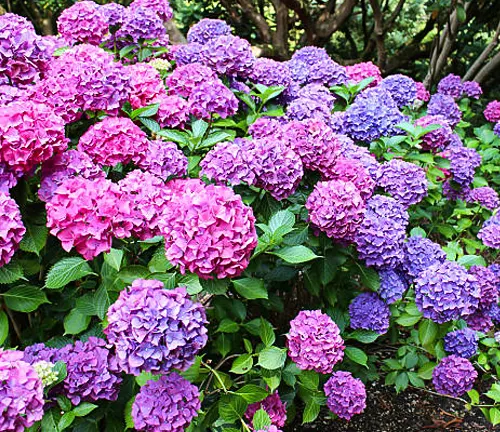
- Additional Insight: In addition to soil pH affecting bloom color, some Hydrangea varieties feature color-changing blooms as they age, providing a dynamic display through the season. The ‘Endless Summer’ series blooms on both old and new wood, ensuring flowers even if winter or pruning damages old stems.
- Light and Soil Requirements: Performs best in partial shade, though some varieties can tolerate full shade. Prefers moist, well-drained soil.
- Bloom Time and Color: Blooms in summer, with flowers lasting into fall.
- Care Tips: Keep soil moist, especially in hot, dry weather. Apply a layer of mulch to help retain soil moisture. Soil pH can affect the color of some hydrangea flowers, with acidic soils producing blue flowers and alkaline soils resulting in pink flowers.
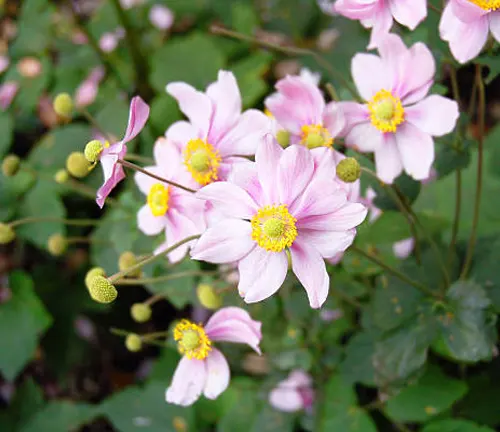
Japanese Anemone (Anemone hupehensis)
Japanese Anemone produces elegant, saucer-shaped flowers atop tall stems, adding a graceful air to the late summer and fall garden. Available in pink, white, and purple hues, it’s a standout in the shade.
- Additional Insight: Japanese Anemone can be a bit invasive in favorable conditions, so it’s wise to consider its placement or opt for container gardening to control its spread. The ‘Honorine Jobert’ variety, with its white flowers, has been a garden favorite for over 150 years, celebrated for its elegance and vigor.
- Light and Soil Requirements: Prefers partial shade but can tolerate full shade in hotter climates. Thrives in well-drained, moist soil rich in organic matter.
- Bloom Time and Color: Blooms from late summer into fall, providing color when many other plants are winding down.
- Care Tips: Water regularly to keep the soil consistently moist. Mulch annually with organic material to enrich soil and retain moisture.
Toad Lily (Tricyrtis hirta)
With its unique, orchid-like flowers speckled in shades of purple, pink, and white, Toad Lily is a fascinating addition to the shade garden, especially appealing for its late-season blooms.
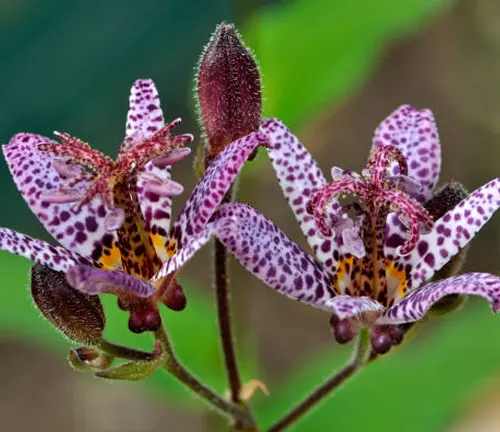
- Additional Insight: Its intricate, star-shaped flowers provide a tropical look, unusual for plants thriving in cooler, shaded conditions. Toad Lilies are relatively disease and pest-free, making them an excellent choice for organic or low-maintenance gardens.
- Light and Soil Requirements: Grows best in partial to full shade and requires moist, well-drained soil rich in organic matter.
- Bloom Time and Color: Flowers in late summer to fall, offering interest when few other plants are in bloom.
- Care Tips: Maintain even moisture throughout the growing season. Apply a layer of mulch to help keep the roots cool and moist.

Solomon’s Seal (Polygonatum odoratum)
Solomon’s Seal is prized for its graceful, arching stems with hanging, bell-shaped white flowers. It’s also known for its striking foliage that turns golden yellow in fall.
- Additional Insight: The plant’s name comes from the seal-like scars on the rhizome, which resemble the ancient seals used for wax stamping documents, adding historical intrigue to its appeal. Variegated varieties like ‘Variegatum’ add light to dark corners with their streaked and edged leaves in white or yellow.
- Light and Soil Requirements: Prefers partial to full shade and moist, well-drained soil.
- Bloom Time and Color: Blooms in late spring, with flowers that are often followed by attractive black or blue berries.
- Care Tips: Water regularly to keep the soil moist, especially in dry conditions. It is low maintenance and can spread over time to form beautiful colonies.
Lungwort (Pulmonaria)
Lungwort is a low-growing perennial known for its spotted or mottled leaves and clusters of blue, pink, or white flowers. It’s a great ground cover for shady spots.
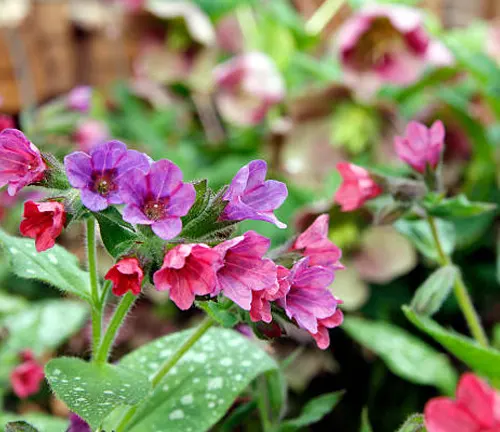
- Additional Insight: The mottled leaves of Lungwort are not just visually striking; they also signify the plant’s historical use in medicinal herb gardens, believed to treat lung diseases. Recent cultivars have focused on reducing mildew susceptibility and improving leaf variegation for year-round interest.
- Light and Soil Requirements: Thrives in partial to full shade and prefers moist, well-drained soil rich in organic matter.
- Bloom Time and Color: Flowers in early spring, providing one of the first splashes of color in the shade garden.
- Care Tips: Keep the soil consistently moist. Lungwort is relatively low maintenance but benefits from being divided every few years to maintain vigor.
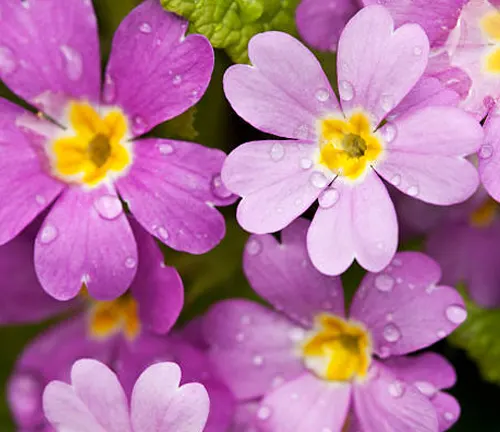
Primrose (Primula)
Primroses offer a dazzling array of colors, with flowers in almost every hue imaginable. They’re excellent for adding a burst of early spring color to shady gardens.
- Additional Insight: Primroses are among the first plants to bloom in spring, often appearing while snow is still on the ground, symbolizing the renewal and hope of the coming season. The ‘SuperNova’ series offers large, brightly colored flowers on strong stems, perfect for early spring containers and garden borders.
- Light and Soil Requirements: Prefers partial to full shade and moist, well-drained soil.
- Bloom Time and Color: Blooms in early spring. Some varieties may offer a second bloom period in fall.
- Care Tips: Water regularly to ensure moist soil, particularly during dry periods. Deadhead spent flowers to encourage more blooms.
A Comprehensive Guide to Shade-Tolerant Flowering Plants
| Common Name | Botanical Name | USDA Hardiness Zone | Height x Spread (ft) | Light Conditions | Scientific Insights |
|---|---|---|---|---|---|
| Astilbe | Astilbe | 3-8 | 2 x 1.5 | Partial to full shade | Astilbe’s feathery plumes are actually clusters of tiny flowers; thrives in moist, fertile soil. High phenolic content contributes to its deer resistance. |
| Bleeding Heart | Dicentra spectabilis | 3-9 | 2-3 x 1-2.5 | Partial to full shade | Contains alkaloids such as isoquinoline, which is toxic but also has medicinal properties. Its unique flower shape is a result of specialized petal development. |
| Foxglove | Digitalis purpurea | 4-9 | 2-5 x 1-2 | Partial shade | Source of digitalin, used in heart medications. Demonstrates a classic example of inflorescence in plant biology. |
| Hellebore | Helleborus | 4-9 | 1-1.5 x 1-1.5 | Partial to full shade | Hellebores contain glycosides, contributing to their toxicity and pest resistance. They exhibit protoanemonin, interesting for its antimicrobial properties. |
| Hydrangea | Hydrangea | 3-9 | 3-10 x 3-10 | Partial shade | Soil pH affects flower color due to aluminum availability; acidic soils produce blue flowers, while alkaline soils produce pink flowers. |
| Japanese Anemone | Anemone hupehensis | 4-8 | 2-4 x 2 | Partial shade | Late bloomer in the shade garden; its rhizomatous spread can be aggressive, indicating a strong survival strategy in competitive environments. |
| Toad Lily | Tricyrtis hirta | 4-9 | 2-3 x 1.5-2 | Partial to full shade | Notable for its orchid-like flowers with intricate patterns; showcases evolutionary adaptation for pollinator attraction in low-light conditions. |
| Solomon’s Seal | Polygonatum odoratum | 3-8 | 1-6 x 0.5-1 | Partial to full shade | Named for the seal-like scars on its rhizomes. Contains saponins, which have been studied for their potential in cancer therapy research. |
| Lungwort | Pulmonaria | 3-9 | 0.5-1 x 1-1.5 | Partial to full shade | The spotted leaves are thought to resemble lungs, hence its name and historical use in herbal medicine for lung diseases. |
| Primrose | Primula | 4-8 | 0.5-1 x 0.5-1 | Partial to full shade | Exhibits heterostyly, a floral mechanism to promote cross-pollination and genetic diversity; this is a subject of evolutionary biology studies. |
The selection of best flowering plants for shade underscores a fascinating blend of beauty and resilience, suitable for enhancing dim garden spaces. Emphasizing varied growth conditions and unique ecological contributions, these plants collectively offer a pathway to creating biodiverse, vibrant shade gardens. Their ability to flourish under canopy cover not only brings aesthetic delight but also showcases the intricate adaptability of nature, making them invaluable for gardeners seeking to explore the rich tapestry of shade gardening.
Maintenance Tips
- Regular Watering: Ensure the soil stays consistently moist, but not waterlogged. Check soil moisture levels frequently, especially during dry spells, and water accordingly.
- Soil Enrichment: Incorporate organic matter such as compost or leaf mold into the soil annually to improve fertility and drainage, which is vital for healthy plant growth.
- Mulching: Apply a layer of organic mulch around plants to help retain soil moisture, regulate soil temperature, and reduce weed competition. Be mindful to keep mulch away from plant stems to prevent rot.
- Pruning and Deadheading: Remove spent flowers and any dead or diseased foliage to encourage more blooms and maintain plant health. This also helps to prevent disease spread.
- Pest and Disease Monitoring: Regularly inspect plants for signs of pests or disease. Early detection and treatment are key to managing potential issues with minimal impact.
- Division and Replanting: Perennials like Astilbe and Hostas benefit from being divided every few years to prevent overcrowding and to rejuvenate plant vigor. Replant divisions to expand your garden or share with friends.
- Fertilization: Apply a balanced, slow-release fertilizer in early spring to support growth and flowering. Avoid over-fertilizing, which can lead to lush foliage at the expense of blooms.
- Winter Protection: For plants that are borderline hardy in your zone, apply a protective layer of mulch after the ground freezes to help insulate roots from extreme cold.
Common Challenges and Solutions in Shade Gardening
Challenge 1: Dry Shade
- Solution: Dry shade, often found under trees, can be a tough environment for many plants. To combat this, incorporate organic matter such as compost or well-rotted manure into the soil to improve moisture retention. Consider installing a drip irrigation system for consistent watering. Plants like Solomon’s Seal and Lungwort are more tolerant of dry shade conditions.
Challenge 2: Soil Compaction
- Solution: Areas under trees or near structures may have compacted soil, which restricts root growth. Aerating the soil gently with a fork (being careful not to damage tree roots) and adding organic matter can help alleviate compaction. Mulching annually with leaf mold or compost also improves soil structure over time.
Challenge 3: Limited Flowering
- Solution: In deep shade, flowering may be reduced due to the low light levels. To encourage blooming, choose plants specifically adapted to deep shade conditions, such as Toad Lily and Lungwort, which are known for their ability to flower in minimal light. Also, ensure that plants receive adequate nutrients by applying a balanced, slow-release fertilizer in the spring.
Challenge 4: Pest and Disease Management
- Solution: Shaded areas can be prone to pests and diseases due to the cooler, moist environment. Regularly inspect plants for signs of trouble and practice good garden hygiene by removing fallen leaves and debris. Choose disease-resistant plant varieties and consider natural pest control methods, such as encouraging beneficial insects.
Conclusion
In essence, selecting the right flowering plants for shade can transform dim and underused areas of your garden into lush, vibrant sanctuaries. With proper care, these plants offer not only a visual feast of colors and textures but also an opportunity to enhance biodiversity and enjoy gardening success in spots once thought challenging. Embracing shade-tolerant varieties ensures that every corner of your garden contributes to an overall aesthetic of beauty and tranquility.
FAQs
- Can shade-loving plants thrive if they accidentally receive too much sunlight?
Shade-loving plants can tolerate occasional sunlight exposure, but prolonged exposure to intense sunlight can cause stress. It’s important to monitor and provide shade if necessary. - Are there any shade-tolerant flowering plants that also attract pollinators?
Yes, Foxglove (Digitalis purpurea) and Bleeding Heart (Dicentra spectabilis) attract bees and hummingbirds, supporting wildlife even in shaded gardens. - How do I ensure flowering in deep shade areas where light is very limited?
Choose plants suited for deep shade, like Toad Lily (Tricyrtis hirta) and Japanese Anemone. Rich, moist soil can also improve flowering. - What are the best practices for mulching shade-loving flowering plants?
Apply a 2-3 inch layer of organic mulch like shredded bark or leaf mold around plants, avoiding direct contact with stems, to retain moisture and suppress weeds. - Can I grow shade-loving flowering plants in containers?
Many shade-loving plants, such as Astilbe and Primroses, thrive in containers with adequate drainage and appropriate care. - How do I deal with pests and diseases in shaded flower gardens?
Inspect plants regularly, maintain garden hygiene, and opt for disease-resistant varieties. Use natural pest control methods to manage issues. - What flowering plants are recommended for dry shade, under trees or overhangs?
Solomon’s Seal (Polygonatum odoratum) and Lungwort (Pulmonaria spp.) can adapt to drier shaded areas, especially with soil improvement and adequate watering. - How can I create a continuous bloom in my shade garden throughout the seasons?
Select plants with staggered blooming times, starting with early bloomers like Hellebores and Primroses, followed by mid-season and late bloomers like Japanese Anemone and Toad Lily, for a vibrant shade garden from spring to fall.
Embrace the shade with these top picks for flowering plants. Each offers something special, turning any shaded spot into a vibrant oasis. Happy gardening!

Benjamin Brooks
Forestry AuthorGreetings! I'm Benjamin Brooks, and my journey over the past 15 years has revolved around the fascinating realms of content creation, expertise in snow clearing, and the intricate world of lumberjacking and landscaping. What began as a simple curiosity about the natural world and heavy machinery has evolved into a passionate profession where my love for crafting words intertwines seamlessly with my lumberjacking and garden skills.

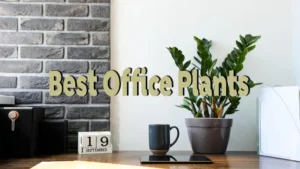











Leave your comment